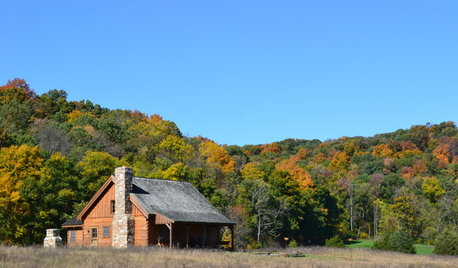Rust in 2007
jakejones
16 years ago
Related Stories

HOUZZ TOURSMy Houzz: Calm, Cool and Collected in Downtown Toronto
A former globe-trotter injects a world of personality into her inviting, airy condo
Full Story
INSPIRING GARDENSHouzz TV: Curves and Surprises Transform a Dry Backyard
A landscape architect’s decision to build a detached studio leads to a whole new backyard full of low-water plants and salvaged treasures
Full Story
KITCHEN DESIGNKitchen Sinks: Granite Composite Offers Superior Durability
It beats out quartz composite for strength and scratch resistance. Could this kitchen sink material be right for you?
Full Story
KITCHEN COUNTERTOPS10 Countertop Mashups for the Kitchen
Contrast or complement textures, tones and more by using a mix of materials for countertops and island tops
Full Story
GREEN BUILDINGHouzz Call: What Have You Salvaged for Home Use?
If your floors, furniture, exterior materials or other home elements have a past life, we'd like to hear the story
Full Story
TREESGreat Design Plant: Downy Serviceberry
Plant this sculptural tree in fall or spring for year-round interest and graceful beauty
Full Story
CURB APPEAL5 Bright Palettes for Front Doors
Splash bold green, blue, orange or red on your front door, then balance it with a more restrained hue on the rest of the house
Full Story
STUDIOS AND WORKSHOPSHouzz Call: Show Us Your Hardworking Studio!
Upload a photo of your home studio or workshop and tell us how you’ve designed it to work extra hard for you
Full Story
RUSTIC STYLEGet Your Rustic On for Log Cabin Day!
Celebrate rugged good looks and simpler times with a gallery of 10 gorgeous log cabins across the U.S.
Full Story
THE HARDWORKING HOME12 Smart Designs for Small-Space Living
The Hardworking Home: Furnish your compact rooms more efficiently with these creative built-ins and adjustable pieces
Full StorySponsored
More Discussions









wildflower
bambi_too
Related Professionals
Beachwood Landscape Architects & Landscape Designers · Boca Raton Landscape Contractors · Broadlands Landscape Contractors · Danvers Landscape Contractors · Holtsville Landscape Contractors · Manhattan Landscape Contractors · Mastic Beach Landscape Contractors · Thornton Landscape Contractors · Uxbridge Landscape Contractors · Weymouth Landscape Contractors · North Aurora Landscape Contractors · Augusta General Contractors · Bryan General Contractors · Selma General Contractors · Walker General ContractorsjakejonesOriginal Author
carlamarie
Maryl (Okla. Zone 7a)
katlynn719
plantdoctor
bambi_too
jakejonesOriginal Author
bambi_too
flowergirl70ks
Ed
katlynn719
jakejonesOriginal Author
jakejonesOriginal Author
lynxe
Ed
bambi_too
jakejonesOriginal Author
joann95118
cavamarie
Maryl (Okla. Zone 7a)
jakejonesOriginal Author
cavamarie
jakejonesOriginal Author
jakejonesOriginal Author
katlynn719
simplton
okbt
mlwgardener
okbt
shive
katlynn719
beachlily z9a
northerndaylily
Ed
fairysoapgirl
katlynn719